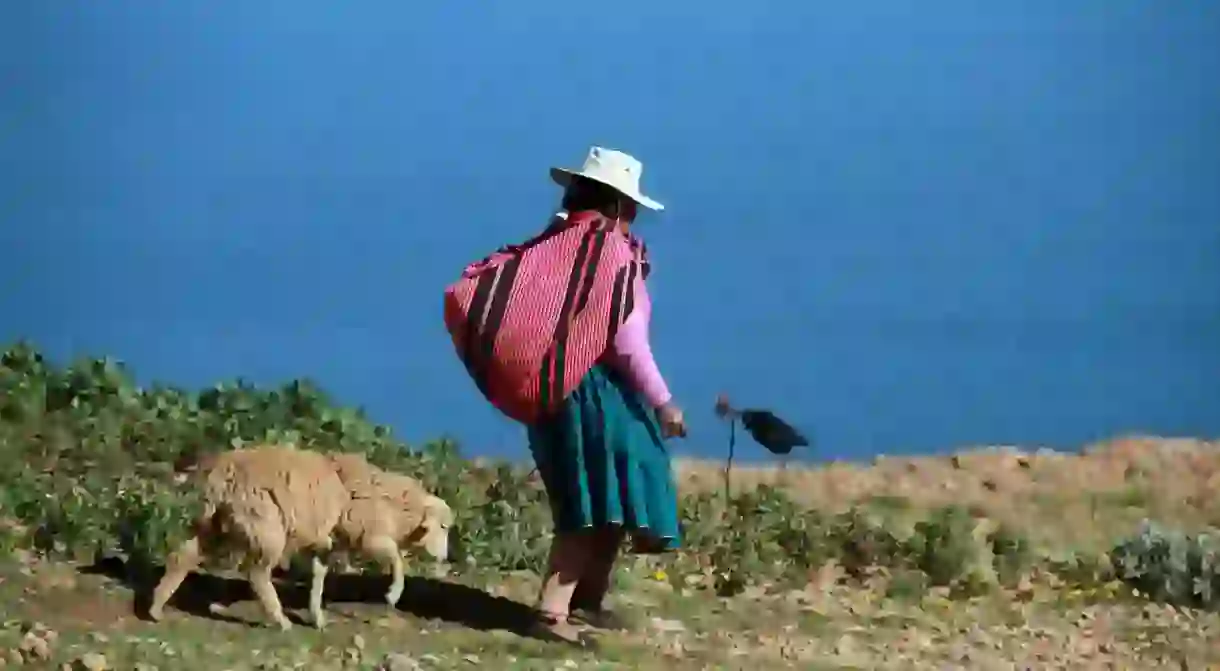The Story Behind Lake Titicaca's Floating Villages

Lake Titicaca has a rich cultural history spanning several millennia – steeped in religious mythology and ancient traditions. South America’s largest lake has been considered sacred by all of the great civilizations who have inhabited it. Indeed, gazing upon its tranquil blue waters underneath the majestic backdrop of the Cordillera Real mountain range, it’s easy to imagine why.
Early inhabitants
The lake’s earliest inhabitants consisted of various tribes who can be traced back to the 2nd millennia BC. These ancient people used llamas for clothing and transport, grew crops of quinoa and potato, fed on trout from the lake and built boats and shelter from totora reeds.

Around 200BC saw the emergence of the mighty Tiwanaku empire. Renowned for their architectural prowess, the Tiwanaku built a massive city from huge stone blocks that once housed 70,000 residents. The city featured ceremonial pyramids, intricately carved statues and the monolithic Gate of the Sun. The Tiwanaku people mastered agriculture, constructing terraces and complex irrigation systems to drain water from the lake. Despite living in relative harmony with other nearby inhabitants, the empire mysteriously went into decline around 1000AD. Historians suspect this may have been due to a prolonged drought which wreaked havoc on their crops.

The Incas
In the 15th century, the Incas marched into the region with the intention of expanding their empire. They were met with little resistance from the local inhabitants who were no match for their superior military might. The Incas sent a gruesome message to potential dissidents by mounting the heads of opposing chieftains on spikes and making drums out of their skin. The locals eventually assimilated with the Incas, and the empire built many of the archaeological remnants that can still be visited today. The Inca continued to rule until the arrival of the Spanish in the 16th century.

Mythology
According to Incan mythology, Lake Titicaca is the center of all creation. It is from this sacred lake that the bearded creator God Viracocha populated the Earth with humanity. However, he was unimpressed with his creation so he brought forth a great flood of which there were only three survivors. The world was shrouded in darkness so Viracocha summoned the sun, the moon and the stars from the lake which allowed the three survivors to repopulate the Earth.

Visit
The lakeside resort town of Copacabana is a four-hour bus ride from La Paz. Most visitors agree that Isla del Sol (Island of the Sun) is the main attraction for its numerous Inca ruins and beautiful lakeside views. Boats leave from Copacabana to Isla del Sol at approximately 8AM and 1PM. The best way to appreciate the island is to do a three-hour hike from end to end and stay overnight in one of the many community-run guest houses. Other wonderful attractions, such as the floating islands of Uros, can be found on the Peruvian side of the lake.














